JAMES RUDDY takes the tiller through Staffordshire
 Sunset falls over Shugborough Hall
Sunset falls over Shugborough HallWHEN Irish teenager John Condon left his home in Wheelbarrow Lane, in Waterford, in 1913, he would have had no idea that he would be carving his place in history – and controversy.
The bright-eyed boy, who had always wanted to be a soldier, was destined to die in the tumult of the looming Great War and to be recorded as the youngest Allied soldier to be killed at the age of 14.
Yet the story did not end there. Over a century later, historical research claimed to show that the youngster was actually 18 when he was killed in an attack during the Second Battle of Ypres.
And, not only that, it has also been maintained that the remains in John’s grave are those of a completely different Irish-born soldier, Rifleman Patrick Fitzsimmons, from Belfast.
Despite such confusion over so many years, the grave bearing John’s name continues to record his short life as just 14 years, in Belgium’s Poelkapelle Cemetery, and is one of the most visited across the whole of the huge World War One panoply with fresh flowers placed there regularly.
It is a site that has attracted countless mourners and tourists – many of them children learning of his sacrifice – and it is a story that has inspired novels, poem, songs and even a stage play.
And it is a story that is often told to visitors by the guides when they near the Irish section of the National Memorial Arboretum, near Lichfield, in Staffordshire.
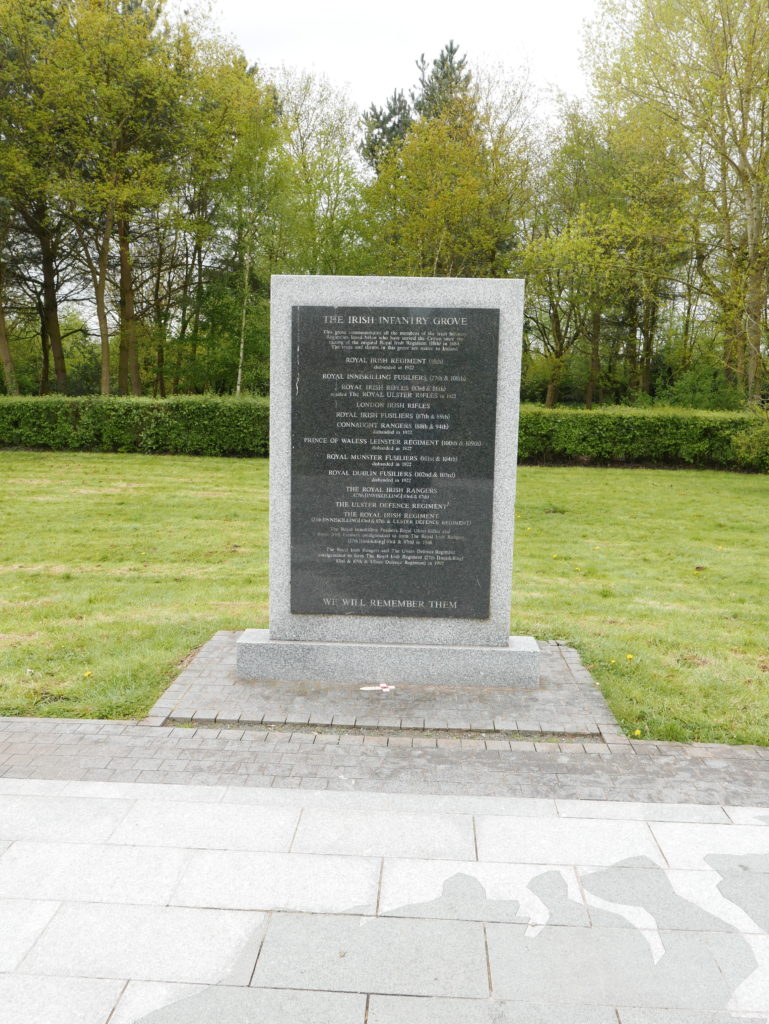 Irish Infantry Grove stone at the National Arboretum
Irish Infantry Grove stone at the National ArboretumDuring a narrowboat trip through the Midlands, I took the time to visit the huge remembrance site which honours the fallen and recognises the service and sacrifice of people who served with the British Armed Forces as well as civilian war victims.
And one of the many poignant memorials is the Irish Infantry Grove which commemorates the sacrifice of Irish soldiers, like young John, who have served with the British Army as far back as 1689.
It was a moving interlude for myself and my partner, the photographer Sue Mountjoy, following in the wake of celebrities Gyles Brandreth and Sheila Hancock who made a similar Staffordshire narrowboat trip in Channel Four’s popular Great Canal Journeys TV series.
As any of the programme’s viewers will have seen, such a voyage - whether for a couple of weeks or just a weekend – is not just a tranquil, four-miles-an-hour chug through idyllic countryside, canal-side pubs and centuries of history – it’s also a journey that creates lasting memories
Our adventure started in Lichfield, the historic city of the three-spire cathedral – one, spire (now restored) was flattened by cannonballs during the English Civil War – and the home of such luminaries as Dr Johnson, the father of the English dictionary, and Erasmus Darwin, a famed physician and slave-trade abolitionist.
A guided tour of the key highlights uncovered a treasure house of quirky stories, including that of puritan heretic Edward Wightman, who was burned at the stake twice in 1612 – the first time ended with him rescued by supporters in the crowd.
And then there was the statue of Captain Edward Smith, who lived nearby and went down with the Titanic, and was immortalised in the blockbuster Hollywood film of the tragedy by the recently deceased Suffolk actor Bernard Hill.
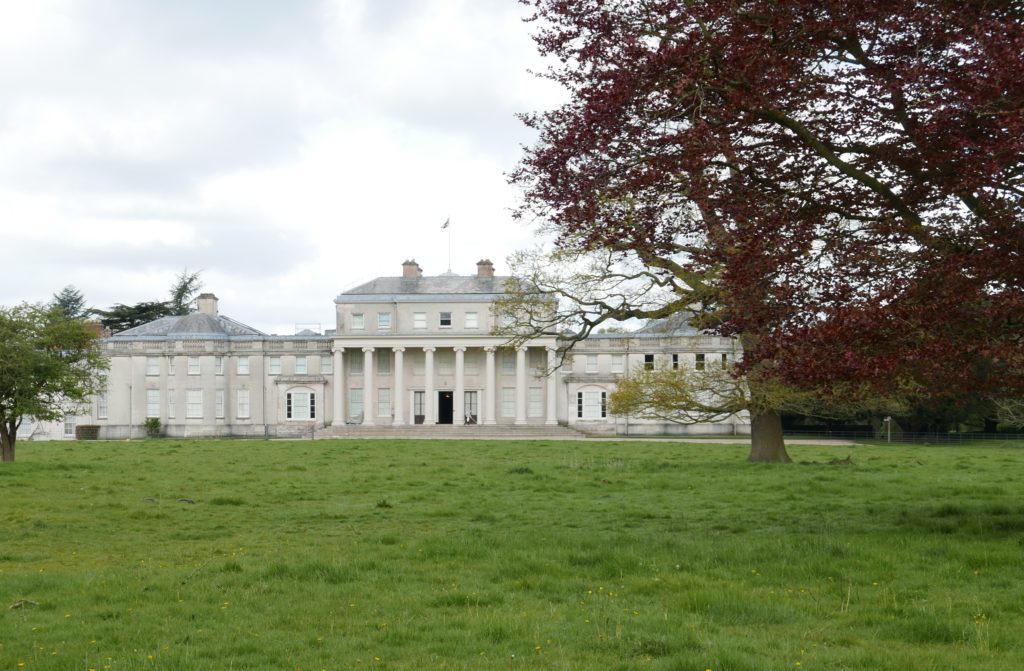 Glorious Shugborough Hall
Glorious Shugborough HallLichfield’s centre is a very pleasant spot for a walk, shop and a meal (we dived into the very popular Pom’s Kitchen and Deli for a very tasty brunch) but we were soon picking up our narrowboat, the Grass Wren, from the nearby King’s Orchard Marina and headed off after some thorough instructions.
Our week-long voyage was designed around tranquillity, enjoying the rolling Staffordshire countryside, with just a couple of locks to negotiate, plenty of friendly locals to encounter and some fascinating settlements and ancient iconic buildings to view alongside the Coventry Canal and then turning left on the Trent and Mersey as far as Tixell Wide, an artificial lake where we turned round and retraced our route.
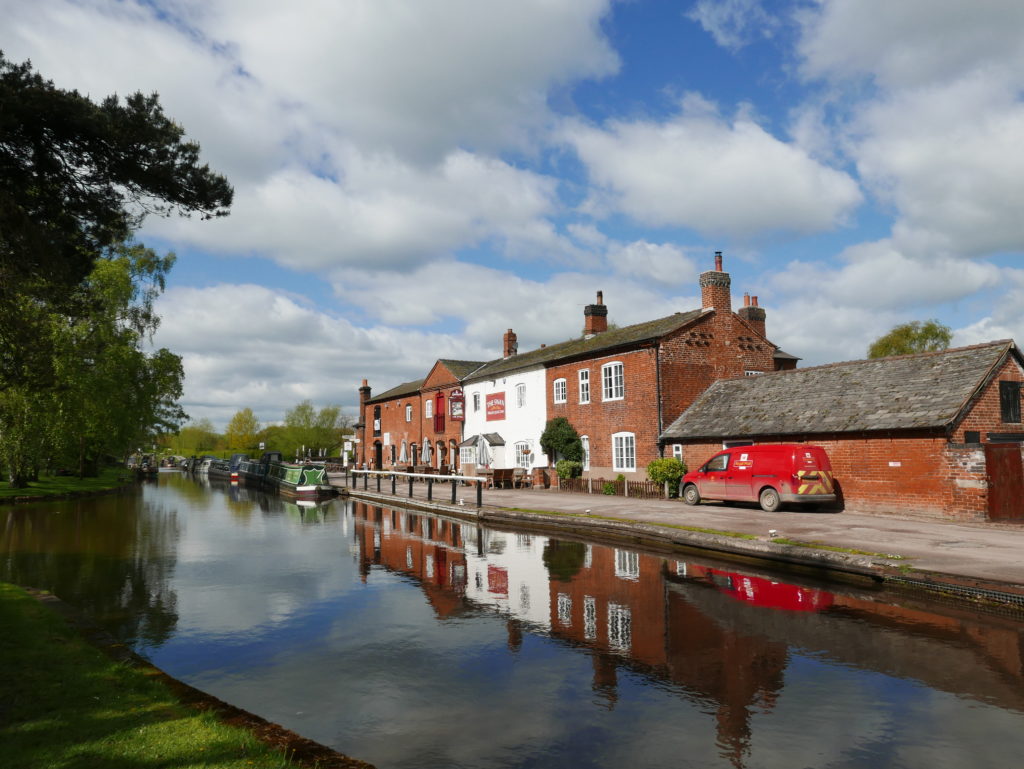 A fine day at the picturesque Fradley Junction
A fine day at the picturesque Fradley JunctionAmong our most engrossing detours was a visit to Shugborough Hall, the grand home of the late 1960s society photographer, Lord Lichfield, who carried out shoots with countless celebrities – including Mick Jagger, Brit Ekland, Olivia Newton John and the Princess Royal – as well as being the official lensman at the wedding of Prince Charles and Lady Diana Spencer.
His extensive private apartment rooms have been fitted out to appear that he had just popped out and include some fascinating insights into the character of a jet-setting man whose pictures took in many of the most beautiful women in the world, until his death from a stroke in 2005.
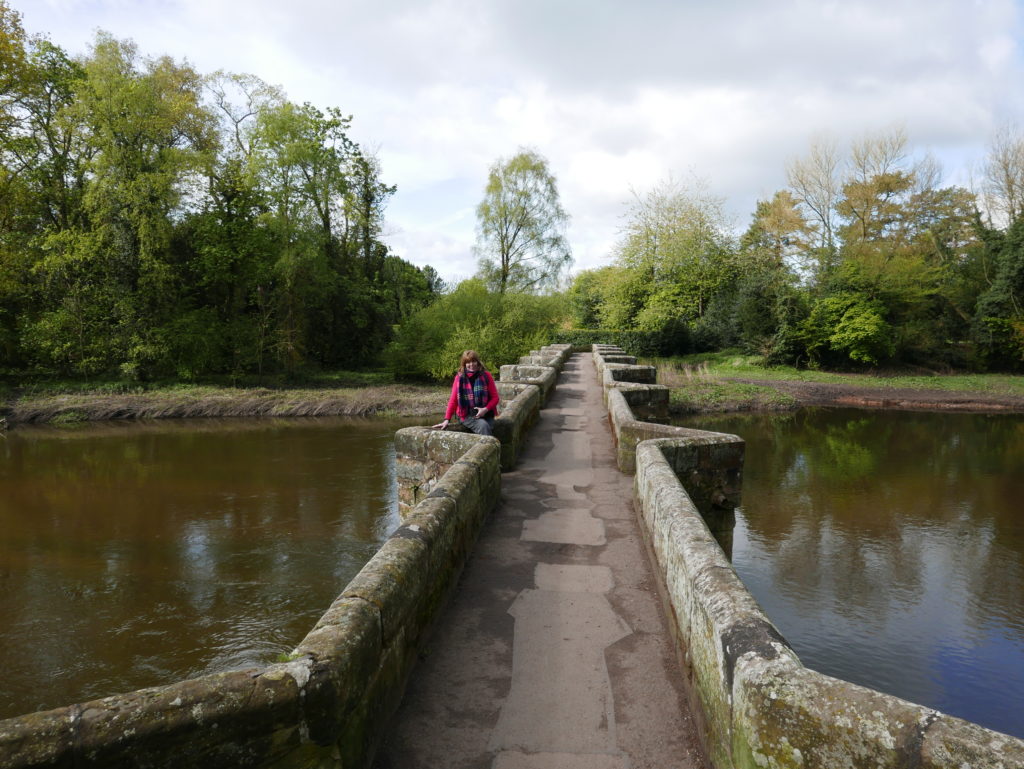 Sue rests on the famous Essex Bridge that took packhorses across the Trent
Sue rests on the famous Essex Bridge that took packhorses across the TrentNearby we crossed one of the area’s most photographed structures, 17th century Essex Bridge, which took pack horses across the Trent and still has 14 of its original 40 round arches in place.
Of course, no narrowboat trip can be conducted without diving into an ancient ale house or two and there were several fine examples where we downed a pint with some lively locals, in the likes of The Swan at Fradley Junction and The Crown at Handsacre, which is next door to Michael’s Fish and Chip Shop (where the queues testify to the quality).
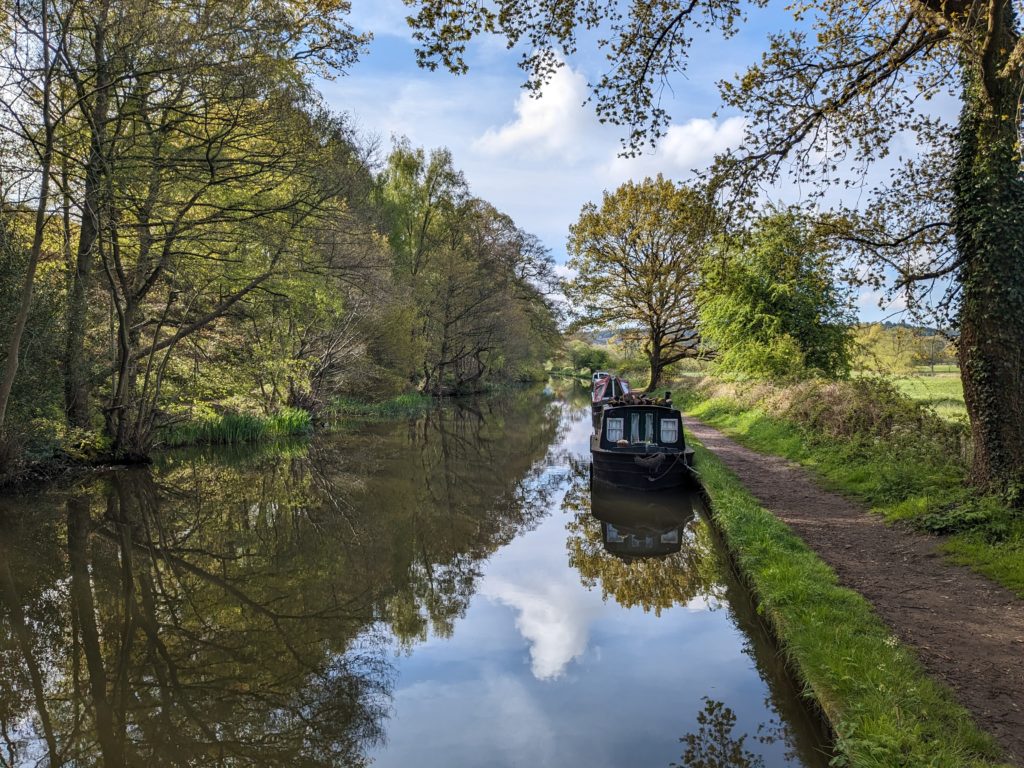 A tranquil day on the Trent and Mersey Canal
A tranquil day on the Trent and Mersey CanalNear Tixell Wide, our turning point, we had our first taste of the unique Staffordshire Oat Cakes at the packed Canalside Café, where we met Noel, from Tipperary, who told us he had been living on the canals since his divorce a decade ago and ‘wouldn’t give it up for the world as there is always something happening and a great community to help you.”
In fact, we encountered that community spirit at some of the locks we passed through, where cheery volunteers from the charity, the Canal and River Trust, give up their spare days to help boaters to raise and lower the gates and set them on their way.
With plenty of nature walks nearby - notably the vast expanse of gorgeous Cannock Chase – and interesting settlements to explore, like Armitage (where the famous loos were first made in 1817) and Rugeley, where the coal mine closed in 1990 but you can still encounter ageing Scotsmen who moved there for the work and remained when it disappeared.
As we pootled back to the marina on the last morning, we felt (as always) reluctant to hand back the 47-foot steel ‘home’ in which we had enjoyed a packed week of fun and adventure, surrounded by quacking mallards, the odd grey heron and bankside avenues of full-leafed trees, with milky sunlight bouncing off the green canal waters.
Narrow boating is a gentle world like no other, in which you feel utterly detached from the roaring motorway traffic you encounter or the 125 trains that fly past in the distance. It should be prescribed on the NHS as a cure for stress.
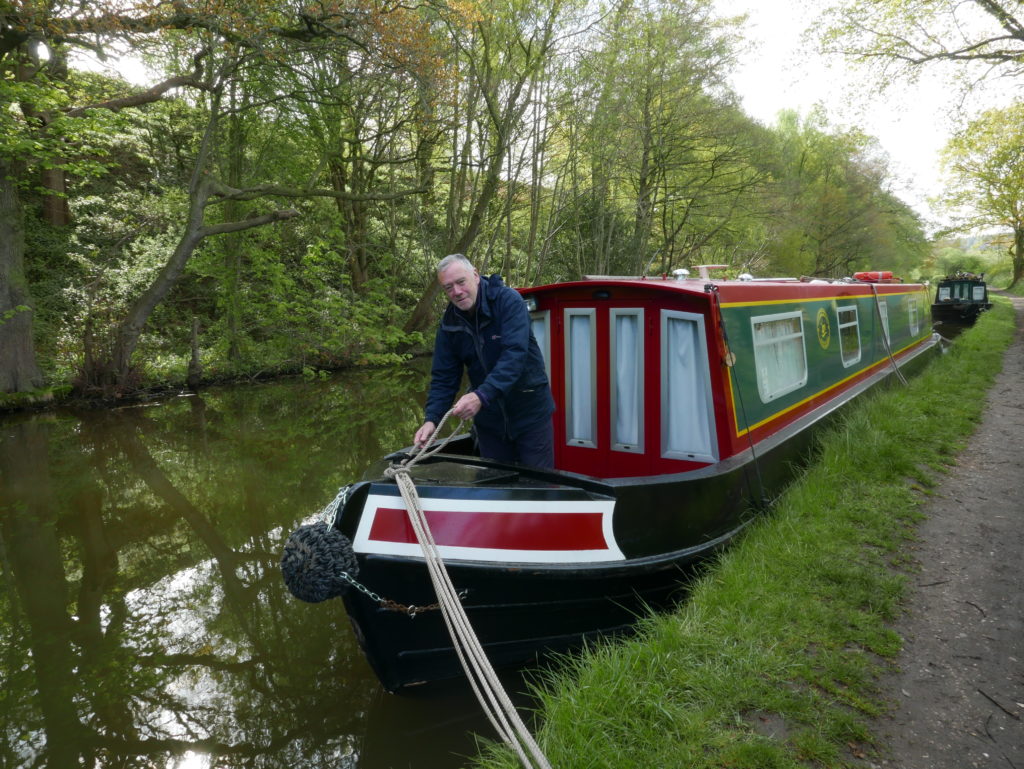 James attempts a fancy mooring knot
James attempts a fancy mooring knotWant to try it out?
If you are new to canal boating (or even a complete beginner) here are James’ and Sue's tips for hiring one and trying out the life:
— Study boat hire websites and get books, guides etc (many libraries have some) and choose which boat and which sights you want to see.
— Pick a route with few locks, as many beginners worry about handling them (they are remarkably straightforward, although some can need extra effort).
— Listen carefully to the expert who will instruct you before you take out your hire boat. Their advice is invaluable and will make the journey so much easier for novices.
— Take clothes for all weathers, your 'tillerman' will be outside in everything, from sunshine to heavy rain (waterproofs are usually provided). Sensible deck shoes are vital.
— Don't take too much food and drink. Boats have great kitchens, but canal pubs are aplenty and have some excellent meals and drinks. There are usually major supermarkets nearby.
— Arrange your stops from your maps and guides (two of the best are Pearson and Nicholson) and you can go birdwatching, rambling, town and village strolling, depending on your interests.
— Share the onboard duties. Many of us want to try steering, tying up, water filling, cooking and cleaning as you go. And it's best to travel as a team rather than having a tyrannical Captain Bligh screaming out orders on the poop deck
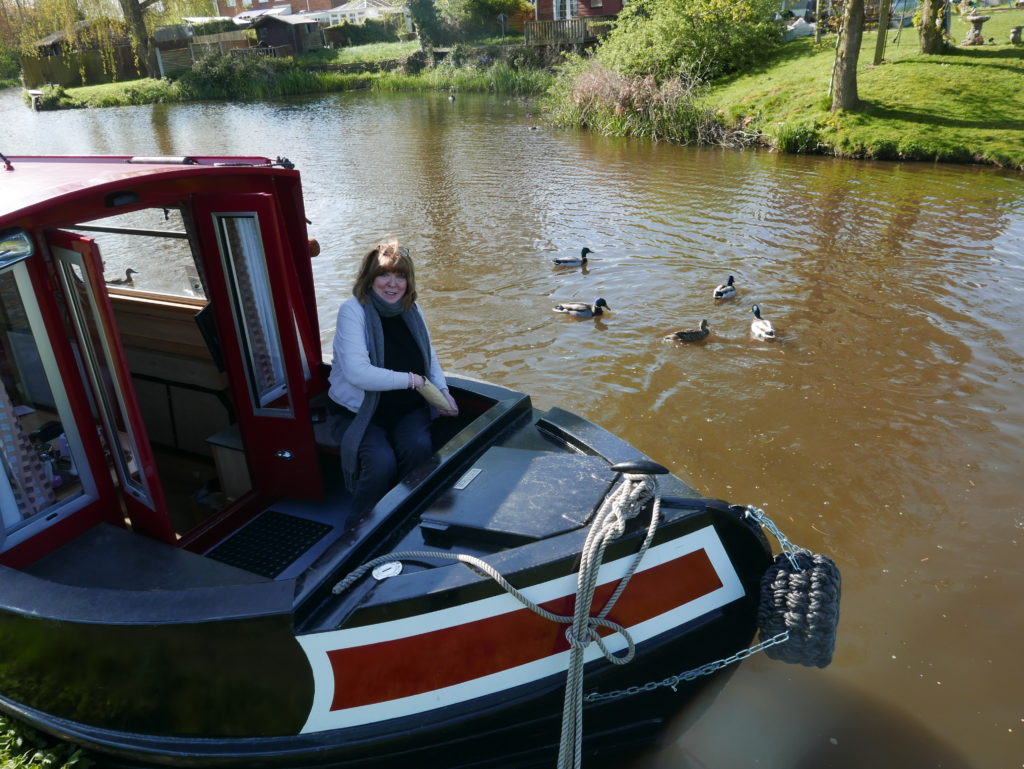 Sue tests her floating bird food with some customers
Sue tests her floating bird food with some customersFactfile
The 2-4 berth Wren Class is available from Kings Orchard Marina, near Lichfield. Prices for 4 nights start from £799 plus a £60 fuel deposit. ABC Boat Hire have 200 boats at 16 locations throughout the UK Go to: www.abcboathire.com 0330 3330 590
Information on Staffordshire: www.enjoystaffordshire.com Among the places James and Sue visited were: Lichfield Cathedral www.lichfield-cathedral.org Pom’s Kitchen & Deli in the city: https://pomskitchen.uk/
National Memorial Arboretum: www.thenma.org.uk
Shugborough Estate: www.nationaltrust.org.uk/visit/shropshire-staffordshire/shugborough-estate Canalside Farm, Shop & Café: www.canalsidefarm.co.uk/cafe

